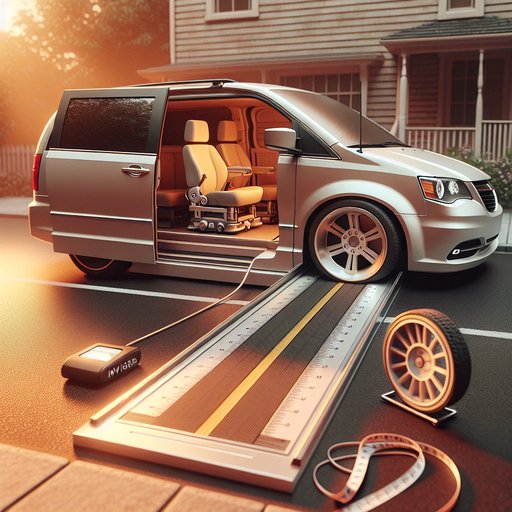
We spent a week measuring a 2024 Toyota Sienna XLE FWD (18-inch wheels) with a tape, inclinometer, and a selection of portable ramps to assess real-world accessibility for older occupants and those using mobility aids.
The Sienna’s hybrid powertrain (2.5-liter four-cylinder with eCVT, 245 hp combined) doesn’t change its stance much versus non-hybrid rivals, and there’s no height-adjustable suspension. Our measurements were taken on level tarmac with a full tank and tire pressures set to 36 psi. All seats were set to an average adult position unless noted. Front doors open wide and the sliding doors are generous.
Measured clear front-door aperture was 830 mm wide by 995 mm tall (32.7 x 39.2 in), with the door opening to roughly 70°. The sliding-door aperture measured 835 mm wide by 1,045 mm tall (32.9 x 41.1 in). The lower rail/threshold is nearly flush, with only a 10–12 mm lip under the scuff plate, so canes and small-wheeled rollators don’t snag. Grab handles are well placed at the B- and C-pillars for three-point support during ingress.
Sill/step-in height is low for the class: 430 mm (16.9 in) at the sliding door and 445 mm (17.5 in) at the front door, measured from ground to cabin floor. Front seat height (cushion front edge, seat mid-height) is 660 mm (26.0 in) from the ground, essentially “chair height,” easing stand-to-sit transfers. Second-row outboard seats sit at 635–645 mm (25.0–25.4 in) depending on fore-aft and recline. Cushion bolsters are modest, reducing the lateral “hurdle,” and the seat leather has just enough friction to prevent sliding without impeding pivots.
Boot access is friendly, with a measured lift-over of 660 mm (26.0 in) to the load floor and a deep well behind the third row. The clear hatch opening is 1,230 mm wide by 1,200 mm tall (48.4 x 47.2 in), and the interior floor is flat with a small 8–10 mm lip at the bumper seal. The powered tailgate can be paused mid-travel to avoid garage doors, and there’s enough vertical clearance to roll in a compact scooter with the tiller folded if you mind the angle. Ramp compatibility: with a 660 mm (26 in) rise, a 6‑ft ramp creates an approx 19.9° slope; 8‑ft about 15.2°; 10‑ft about 12.3°.
For most mobility scooters, keeping under ~12° is advisable, making a 10‑ft ramp the practical minimum. ADA’s 1:12 guideline for independent wheelchair use would require ~26 ft (impractical for a boot). In our tests, a 7‑ft suitcase ramp was fine for loading a folded manual wheelchair or travel scooter with caregiver assistance, but too steep for an unassisted user. The Sienna’s bumper top is robust enough to support ramp feet with a non-slip protector, and there are accessible tie-downs to secure cargo.
Overall, the Sienna scores highly for day-to-day accessibility: wide doors, low sills, chair-height seats, and a moderate lift-over make entries and cargo loading straightforward. For independent wheelchair ingress/egress, a lowered-floor conversion with an in-floor ramp remains the gold standard; in stock form, the Sienna is best for caregivers transferring users or loading aids. If you don’t need third-row Stow ’n Go-style tricks, the Toyota’s ergonomics and low step-in edge it over most SUVs for mobility-minded buyers.












